Hello there, fellow email marketers! Let’s talk about how to measure email marketing success.
Despite the rumors of email marketing dying, it remains an integral part of any effective digital marketing strategy.
But how do we gauge the effectiveness of your email marketing?
As a seasoned email marketing expert, I’ve learned that the key lies in understanding and measuring those metrics that serve as the best key performance indicators (KPIs) for your email marketing campaigns.
As Marketo says,
“It’s difficult to overstate the importance of maintaining a robust email marketing strategy or the value of the marketing metrics you use to maintain it.”
There are some important email marketing metrics that you should be measuring on a regular basis if you want to maintain email list health and improve the return on investment (ROI) of your email campaigns.
In this blog, we’ll discuss:
- 9 Important Email Marketing Metrics To Measure
- 5 Steps To Benchmark Email Marketing Effectiveness
- What To Test To Improve Your Email Marketing Campaigns
Sound good?
Great! Let’s start with how to measure email marketing success.
9 Important Email Marketing Metrics to Measure
There are nine important email marketing metrics that you need to be measure your email marketing efforts.
Some of these email metrics need to be monitored weekly so that you can tell ahead of time whether any given campaign will hit it out of the park or fall short. By finding this out early on, you can “pivot” as needed to meet your revenue goals (by pulling out a backup campaign, for example).
Other metrics need to be measured every month. This way, you’ll be able to determine which campaigns you need on your calendar for the coming months or how you need to adjust the campaigns you already have planned.
Let’s take a look at each of these nine metrics.
1. Open Rate
Your open rate is the percentage of your email recipients who opened your email. This is an important email metric to measure because your email campaigns won’t do a thing unless your subscribers are actually opening and reading them.
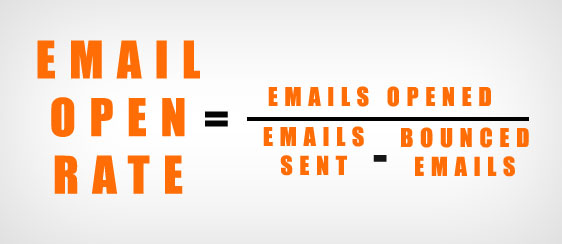
How to Calculate: Total Opens / Emails Delivered
When to Track: Weekly
Factors: There are a couple of factors that can affect your open rate. They are but not limited to, delivery rate, sender’s name, and the second is your email subject line.
For tips on improving your open rate, check out 10 Easy Ways to Improve Your Email Open Rate.
2. Click-Through Rate (CTR)
Your click-through rate or CTR is the percentage of the number of people who clicked on a link inside your email. Usually, getting your subscribers to click on a link inside your email will be the main goal of your campaign, so this is one of the most important metric to measure.
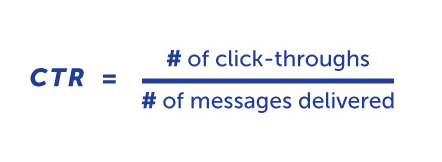
How to Calculate: Total Number of Clicks / Emails Delivered
When to Track: Weekly
Factors: Your CTR will be affected by the anchor text on the link, as well as the location of the link in the body of your email, the number of times you included the link, and even the copy leading up to the link.
For help improving your click-through rate, check out 7 Things You Can Do to Significantly Improve Your Email Click-Through-Rates.
3. Unsubscribe Rate
Your unsubscribe rate is the percentage of your email recipients who clicked on the “unsubscribe” link inside your email.

How to Calculate: Total Number of Unsubscribes / Emails Delivered
When to Track: Weekly
Factors: There are many factors that can affect your unsubscribe rate. Unsubscribe rates can be high when you don’t have a strong welcome series, if your “from” name isn’t recognizable, if you use misleading subject lines, if you don’t email frequently enough, or if you email too frequently.
Check out our guide to reducing email unsubscribes rates for more tips.
4. Spam Complaint Rate
Your complaint rate is the percentage of your email recipients who marked your email as spam.
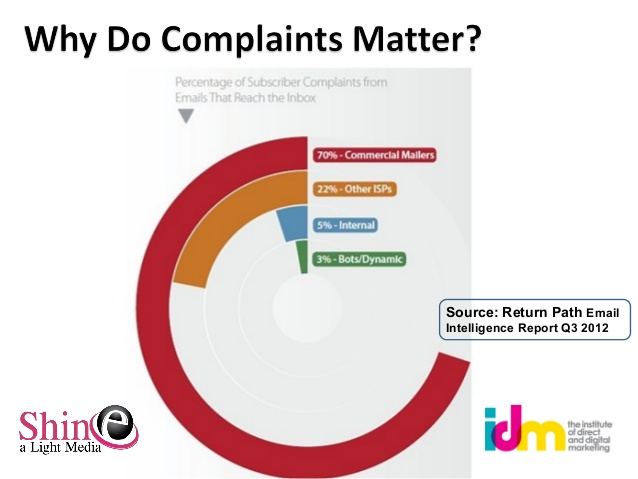
How to Calculate: Total Complaints / Emails Delivered
When to Track: Weekly
Factors: Reasons for high complaint rates include using purchased email lists, not including an unsubscribe link in your emails, sending irrelevant content, stale email addresses, and emailing too frequently.
The State of Mobile Email Engagement: What You Need to Know
5. Conversion Rate
Your conversion rate is the percentage of your email recipients who completed your desired action (e.g. purchasing a product).

How to Calculate: Total Conversions / Emails Delivered
When to Track: Monthly
Factors: There are many factors that can affect your conversion rate, depending on what a successful conversion is in your particular campaign. If a conversion is a successful action that happens on your website after someone clicks on a link inside your email, you’ll want to make sure that your website is optimized for conversions.
Check out our Beginner’s Guide to Conversion Rate Optimization here.
6. Bounce Rate
Bounces happen when an email server refuses to accept an email. This information is valuable for maintaining a tidy audience database and monitoring email deliverability success.
A low bounce rate helps maintain a positive sender reputation. Contrarily, a high bounce rate indicates that your content is not being delivered (and therefore not seen), negatively impacting your sender reputation.
There are two types of bounces.
- Hard Bounces: This occurs when an email is permanently rejected because the recipient’s email address is invalid, non-existent, or blocked.
- Soft Bounces: This happens when an email is temporarily rejected due to issues like a full recipient inbox or a server problem.

How to Calculate: Total Bounces / Emails Sent
When to Track: Monthly
Factors: Emails can bounce due to a non-existent email address, if the receiving email server is unavailable or overloaded, if the recipient’s mailbox is full, if the recipient is on vacation with auto-reply, or if the receiving server has blocked the incoming email. A low bounce rate also adds up to a negative delivery rate.
7. Forward/Share Rate
Your forward (or share) rate is the percentage of your email recipients who forwarded your email to a friend or shared your email by clicking on a share button inside your email.
This may not seem like an important metric to measure, but it’s a really good thing to try and increase. If your existing leads are forwarding your emails, that means they are actually becoming ambassadors of your brand and generating new leads for you.

How to Calculate: Total Forwards / Emails Delivered
When to Track: Monthly
Factors: Nurturing your email list is the biggest factor here. Don’t forget to nurture and reward your existing customers.
8. Campaign ROI
Your campaign ROI (return on investment) is the overall return on your investment for your email campaign.

How to Calculate: ($ Sales – $ Invested) / $ Invested
When to Track: Monthly
Factors: The above formula to calculate campaign ROI is pretty simplistic, and measuring your true ROI can be tricky. For instance, knowing when to measure your results is tough. One email marketing campaign today could affect your results a month or even a year from now.
To learn more about the factors that affect your ROI and how to measure it, check out this guide on How to Measure the ROI of Marketing Programs.
9. List Growth Rate
Your list growth rate is how your email list has grown over time.

How to Calculate: New Subscribes – (Unsubscribes + Complaints) / Total Number of Subscribers (over a specific period, e.g. the last 30 days)
When to Track: Monthly
Factors: If your list isn’t growing, it’s dying. Not only do people unsubscribe, but email addresses tend to go “bad” over time due to people switching email accounts and abandoning the old ones. Make sure you are constantly building your list and keeping your unsubscribes at a reasonable rate.
OK, now that you know the important email marketing metrics you should be tracking, let’s look at how to set benchmarks so that you can set realistic goals and measure your improvement.
5 Steps to Benchmark Email Marketing Effectiveness
Benchmarking your current email marketing campaign performance is crucial if you want to measure the effectiveness of your email marketing. You have to establish a baseline if you are going to understand what any of these numbers mean for you truly.
Here are 5 steps you can take today to benchmark your email marketing effectiveness.
Step 1: Chart Past Broadcasts
First, go back to your old broadcasts from the past 3-12 months and chart the above metrics. At the minimum, you should be charting your open rates, click-through rates, unsubscribe rates, complaint rates, and forward rates.

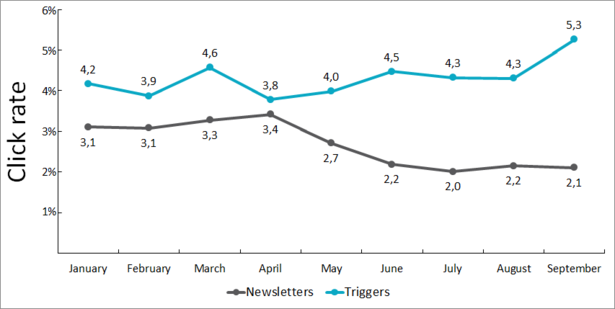
Step 2: Establish Averages
Next, calculate the average of each metric you charted in Step 1. Add up your values for each metric, then divide that by the total number of email campaigns sent during that period.
So, for example, if I sent 3 campaigns that received 21%, 23%, and 42% open rates, respectively, my average open rate would be (21 + 23 + 42) / 3, or 28.67%.
Step 3: Identify Outliers
Now, you’ll want to take a look and see where any outliers are.
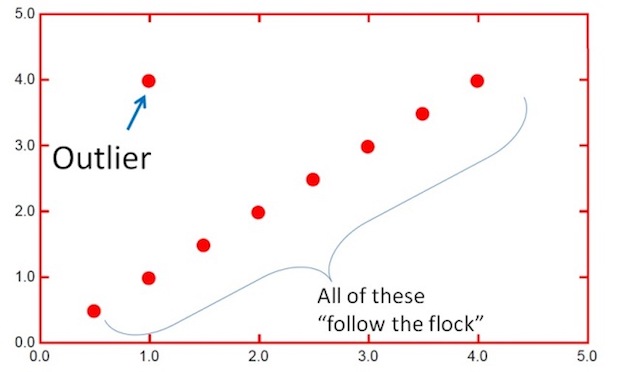
Once you know your average open rate, for example, you can see whether any particular campaigns had an unusually high or low open rate. Take note of these outliers.
Step 4: Identify Patterns
Do you notice any patterns? Does a specific topic do well? Would sending at a particular time of day be better or worse?
Take note of any patterns that emerge and use these to improve your future campaigns.
Step 5: Set Baselines and Goals
Finally, you can set baseline numbers and goals for your email marketing metrics. This way, you can judge whether performance of your email was better or worse than expected. You’ll also be able to repeat what worked or ditch what didn’t work.
For example, one of your emails had an open rate well above your baseline. You should look at that subject line and consider why it did so well. It could be the subject line type or topic your subscribers responded to. Now that you know what works, you can create more subject lines like that in the future.
Now that you have set your baselines and goals for your email marketing metrics, let’s look at a few key variables you’ll want to test to improve your campaigns and reach your goals.
What to Test to Improve Your Email Marketing Campaigns
So now you have set benchmarks for each email marketing metric, and you know what “normal” numbers look like for your particular email list.
But you may wonder, what if you aren’t happy with those numbers? How do you go about improving each of those email metrics?
There are some key variables that you should be testing if you want to improve your email campaigns. Let’s go over them one by one.
1. Time
The time when you send your emails will affect your open rates. If you send your emails at the wrong time, such as when your subscribers are “purging” their inboxes, you’ll see much lower open rates than you should be.
As a general rule, it’s a good idea to avoid the early morning, the lunch hour, and after work, because these are the times when people will likely be cleaning out their inboxes. That means you are probably safe to send emails between 8:30-10:AM, 2:30-3:30 PM or 8:00-midnight.
However, your best send times will vary from one email list to another, so a/b test sending emails at different times of the day and track your open rates.
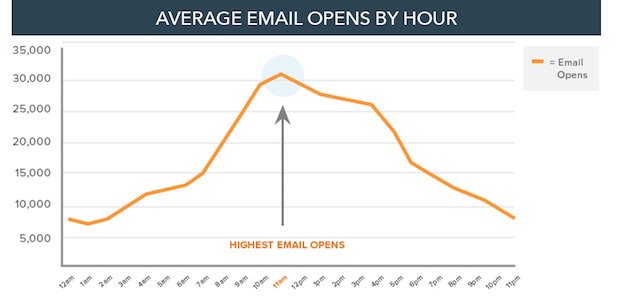
For more information, check out our in-depth guide on The Best Time to Send Emails (Here’s What Studies Show).
2. Topic
The topic of your email can have a huge effect on your open rates, click-through rates, and unsubscribe rates.
As a general rule, make sure that you are tagging and segmenting your email subscribers by interest so that you can send them the most relevant topics.
At the minimum, you should tag new subscribers based on the lead magnet they downloaded. To do this, you can use OptinMonster integrated with any major email marketing platform that offers tagging.
There are also many other ways you can segment your list to increase the relevancy of your emails. Here are 50 Smart Ways to Segment Your Email List Like a Pro.
Even after you’ve segmented your email list, you’ll still want to monitor which topics your subscribers respond to the best (and which topics they don’t resonate with). This will give you important insights into creating better email content and products for your subscribers and customers.
3. Subject Line
Your subject line is the biggest factor that affects your email open rate. There are two main types of subject lines that you should be using in your campaigns:
Direct Subject Lines
Direct subject lines are simply direct and to the point. These subject lines focus on the big benefit that the recipient will get from opening the email.
Here are some examples of direct subject lines:
- “CYBER MONDAY! Save 35% OptinMonster + Bonus”
- “69 Lead Magnets to Grow Your Email List”
- “My Favorite OptinMonster Hacks to Boost Conversions”
Curiosity Subject Lines
Curiosity subject lines don’t tell exactly what you’ll get when you open the email. Instead, they say just enough to make you curious, but you’ll have to open the email to satisfy that curiosity.
Here are some examples of curiosity subject lines:
- “Want $40?”
- “Santa came early this year…”
- “Don’t Open This Email”
Check out 101 Best Email Subject Lines to Boost Your Email Open Rates for many more subject line ideas. Want info that will help you understand what works? Check out these subject line statistics.
4. Link Anchor Text
You’ll also want to a/b test your links’ anchor text since this will impact your click-through rates.
To improve your anchor text, use a strong call to action (CTA) that inspires action. Here are some examples:
- “Click here to get OptinMonster now”
- “Read the full case study”
- “Go ahead and read the full article”
To make your calls to action even more compelling, try adding power words to them. Power words are words that copywriters use to trigger a psychological or emotional response. For a comprehensive list, check out these 700+ Power Words That Will Boost Your Conversions.
Conclusion
That’s it! In this guide, I showed you the 9 important email marketing KPIs to measure, when and how to track them, and what to test to improve them.
Now it’s your turn. Go ahead and look at the state of your email marketing performance right now by following the 5-step benchmarking process outlined above. Then, you can set some goals for improvement and keep track of your progress weekly and monthly!
You may also want to check out:
- 19 Quick and Dirty Tricks for Writing Better Emails
- Complete Guide to Email Marketing.
- 20 Top Social Media Platforms for Explosive Brand Growth
- Google Analytics 101: How to Track Your Conversions (Step-by-Step)
- Create a Landing Page in 10 Minutes: Step By Step Tutorial
- Optin Page Perfection: Examples & Tools to Boost Conversions
- Lead Generation 101: A Beginner’s Guide into Acquiring Quality Leads
- 8 Best Email Marketing Tools For Saving Time and Increasing Conversions

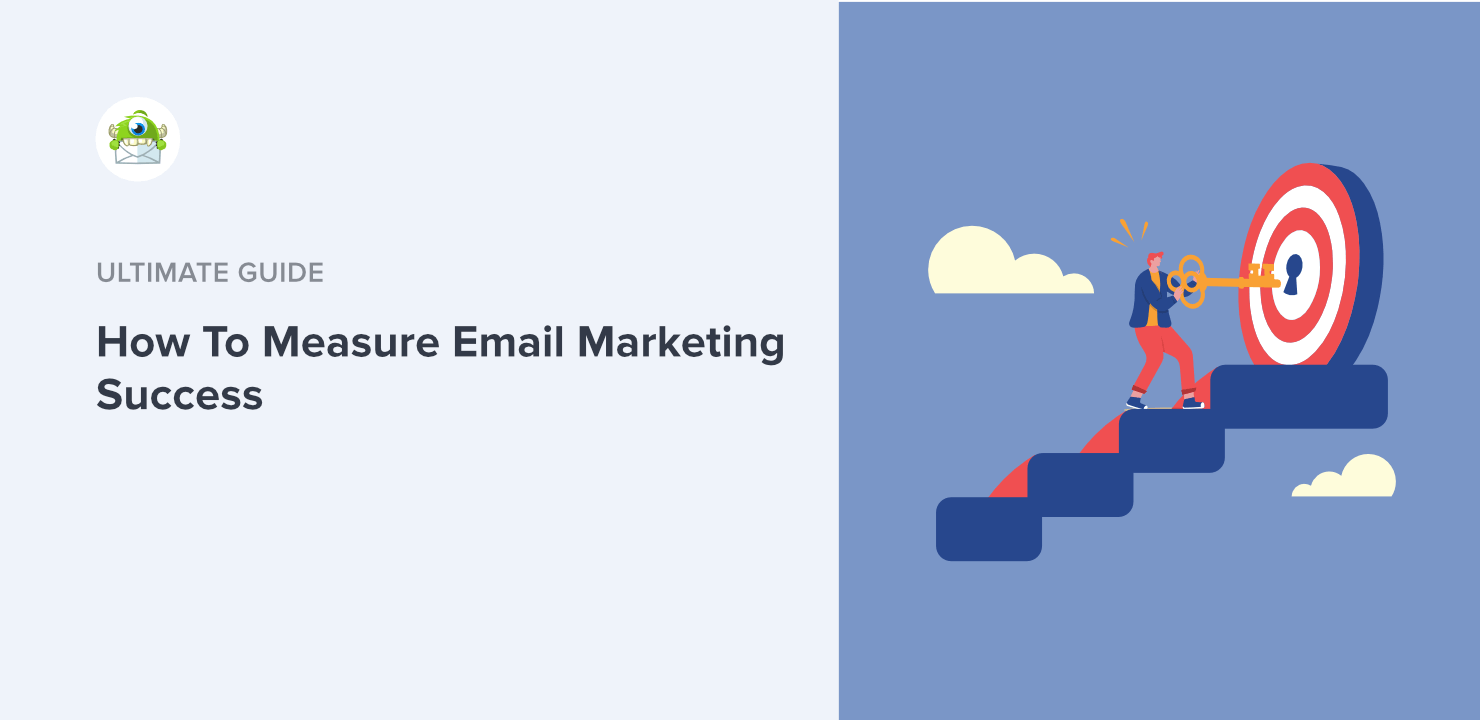
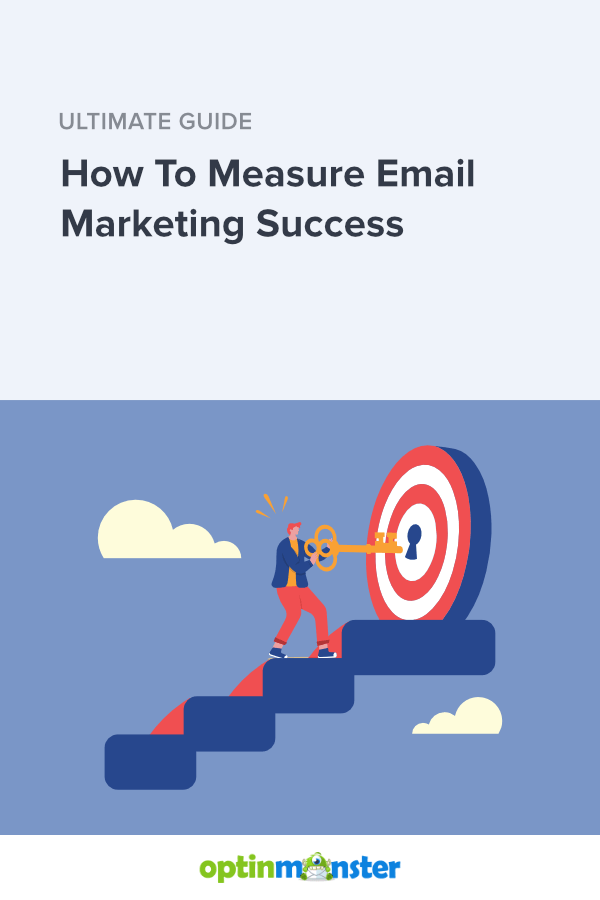



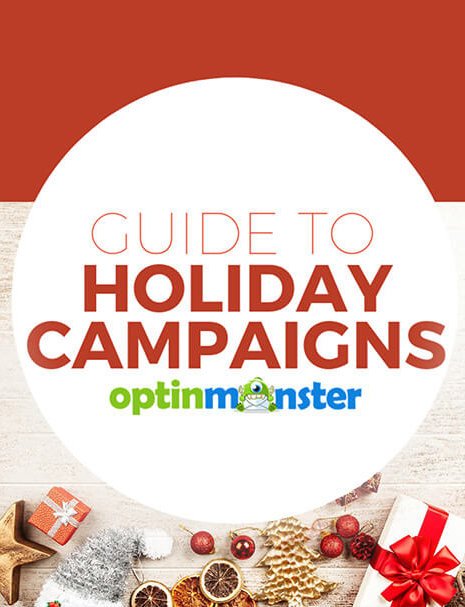
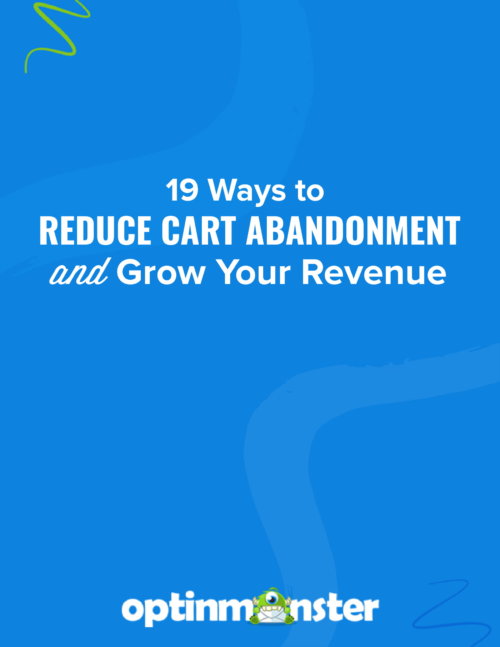



Add a Comment